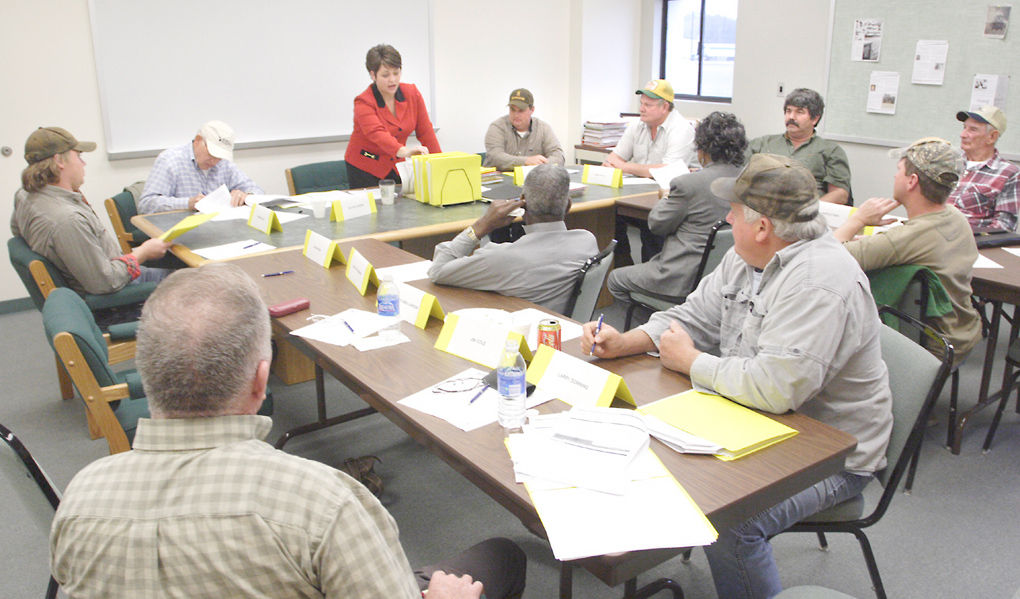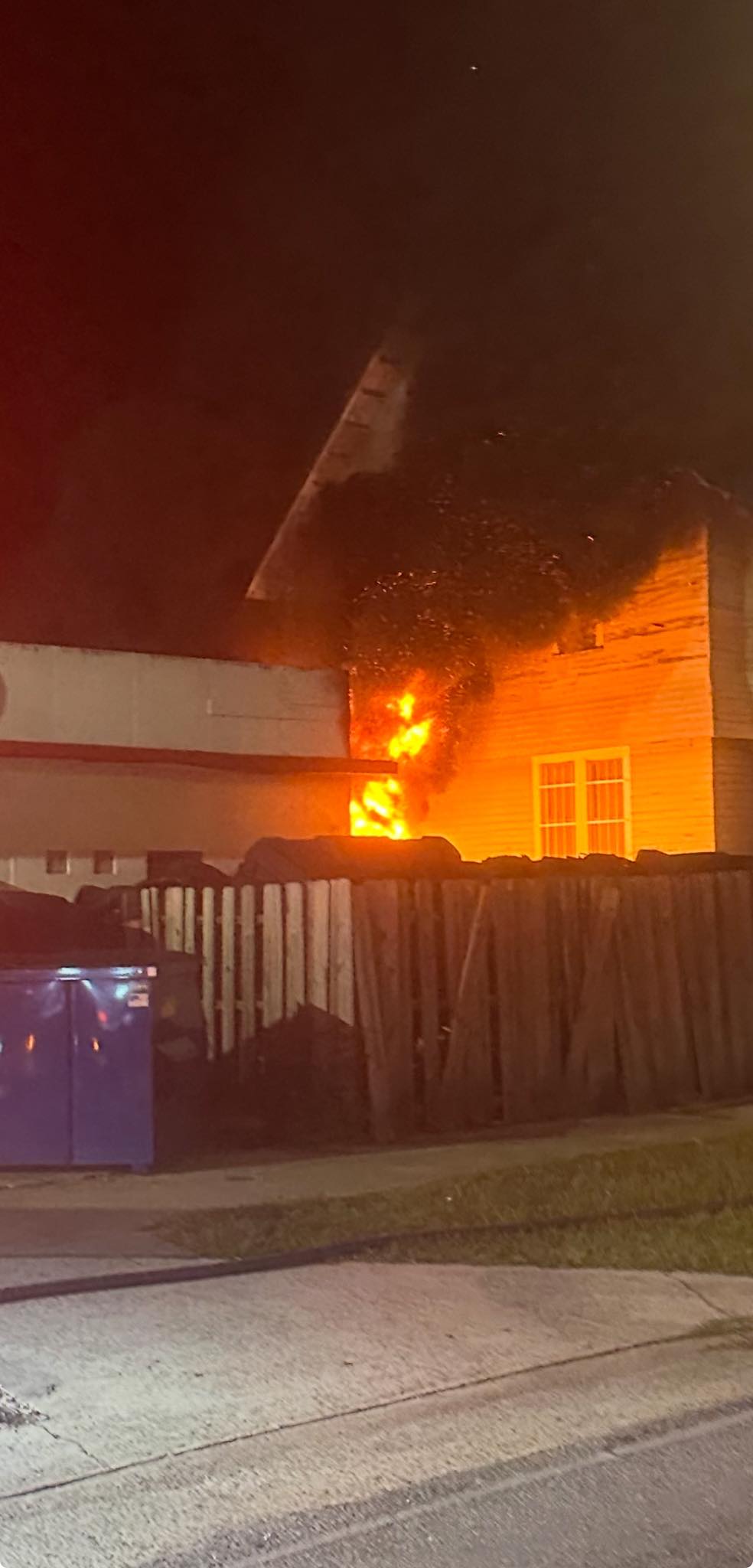Farmers get money to offset 2007 losses
Published 6:41 pm Saturday, January 19, 2008

- Paul Leavy/The Valdosta Daily Times
VALDOSTA — Farmers in Echols, Lowndes, Clinch and Lanier counties, listen up. Losses from failure to plant crops or loss of planted crops due to the disasters of 2007 can qualify for reimbursement from the federal government.
The U.S. Department of Agriculture (USDA)’s Farm Service Agency office for those counties, based in Valdosta, issued the announcement this week in an effort to get the word to area row crop farmers, ranchers and livestock farmers to come into the Valdosta office and file for losses.
The farmers will find that to be good news considering that losses suffered in 2005 and 2006, for many, were not as bad as the losses suffered from the Easter freeze of 2007 and the extended drought that continued through the summer 2007. The area has yet to fully recover from the drought. Also, farmers and timber growers lost millions in the wildfires that criss-crossed South Georgia in 2007.
Congress had not approved any relief for 2007 losses and both Republicans and Democrats in both houses have been bickering, unable to approve a new Farm Bill for 2008.
Fortunately, Pres. George W. Bush on Dec. 26, 2007 signed the Department of State, Foreign Operations and Related Programs Appropriations Act of 2008, which amended a previous Act that now allows crops planted prior to Dec. 31, 2007, for the 2007 crop year, to be included under the Crop Disaster Program (CDP).
With approval by the local FSA committee, farmers can qualify for the assistance.
The local FSA office has already issued $3.8 million in 2007 for some of the four-county coverage area’s 588 farmers who qualified for disaster relief, farm payments and farm loans, said Terrie P. Wolford, county executive director of the local FSA.
But farmers who received that assistance might still qualify for more as long as they don’t cross the allowable cap of $80,000 per producer set by the federal government. Also, many farmers who have private insurance who have filed claims must wait until the private claims have been processed before filing for the disaster relief money, Wolford said.
She urged farmers to contact her office at 229-242-0575 or come into the offices at 2108 E. Hill Ave. across the street from Southland Church on U.S. 84 to inquire and apply.
Also, farmers who have not signed up for private insurance policies or have not signed up for FSA’s Non-Insured Crop Disaster Assistance Program (NAP) coverage must sign up no later than Jan. 31 to qualify for coverage in the 2008 calendar year.
NAP is a federally funded program that provides financial assistance to producers of non-insurable crops when low yields, loss of inventory or prevented planting occurs because of natural disasters.
“You can’t wait until a disaster happens to apply,” Wolford warned.
Anticipating an influx of calls from the local FSA’s 588 registered farmers, Wolford also warned that the Valdosta office will be closed Monday in observance of the Martin Luther King Jr. federal holiday.
“We’ve got a staff of five here and they’re very ready to assist anyone who wants to inquire or apply for either the disaster relief assistance or to purchase a NAP policy for 2008,” she said. “I realize that some farmers who may have suffered more staggering losses won’t find a full recovery from 2007 if they lost, say $200,000, when they can only get a reimbursement of $80,000. But they need every penny they can get.”
The USDA in Washington, D.C. gave FSAs permission to issue the disaster relief money in December, she said.
“It’s definitely good news for producers,” she said. “I know a lot of farmers haven’t heard there’s 2007 relief money now. I talked to a producer in Lanier County yesterday and he said he was going in to process private insurance claims on cotton and peanut crop losses for 2007. I told him he needed to come in and see me when he’s done. He asked why, and I told him the federal government finally approved 2007 relief money. He had no idea.”
Requirements are somewhat tedious but paperwork can be started online at the FSA’s Web site at www.fsa.usda.gov.
Wolford listed the following information to help producers understand the process:
• On Dec. 26, 2007, President George W. Bush signed the Department of State, Foreign Operations and Related Programs Appropriations Act, 2008 (2008 Act). The 2008 Act amended the previous Feb. 28, 2007, date and now allows for crops planted prior to Dec. 31, 2007, for the 2007 crop year, to be included for loss purposes under Crop Disaster Program (CDP). Similarly, under Livestock Compensation Program (LCP), the 2008 Act extends the date livestock and livestock feed losses could have occurred in a primary or contiguous county named in a Secretarial or Presidential disaster declaration prior to Dec. 31, 2007.
“This date change does not make 2008 crops planted in 2007 eligible for CDP, however it does benefit farmers in that it extends the eligibility date for crops planted in 2007 that were meant for the same crop year, and it adds 10 months to the amount of eligible time livestock losses can be considered for the new programs,” said Wolford.
• Sign-up for the LCP began Sept. 10, 2007; and sign-up for the CDP began Oct. 15, 2007, and applies to farmers who suffered quantity losses to their crops. Ending dates for the sign-up period will be announced at a future date.
• LCP now compensates livestock producers for feed losses occurring between Jan. 1, 2005, and Dec. 31, 2007, due to a natural disaster. Livestock producers may elect to receive compensation for calendar year 2007 grazing season losses caused by a natural disaster occurring during the applicable period as determined by the Secretary of Agriculture.
• Producers with a loss in more than one of the 2005, 2006 or 2007 calendar years must choose only one year for which they want to apply for benefits.
• The CDP now provides benefits to farmers who suffered quantity and quality losses to 2005, 2006, or 2007 crops from natural disasters if the crop was planted before Dec. 31, 2007, or, in the case of prevented plantings, for crops that would have been planted before Dec. 31, 2007. Producers who incurred qualifying losses in 2005, 2006 or 2007 must choose only one year to apply for benefits.
• Only producers who obtained crop insurance coverage or coverage under the Noninsured Crop Disaster Assistance Program (NAP) for the year of loss will be eligible for CDP benefits. Producers must have suffered quantity losses in excess of 35 percent to be eligible for CDP.
• Producers in need of insurance coverage for spring and fall annually planted crops under the Noninsured Crop Assistance Program (NAP) have until Jan. 31 to apply for certain crops for which the catastrophic level of insurance is not available, Wolford said.
“Crop insurance is an important risk management tool for farmers,” said Wolford, “but it’s not available for all crops. That’s why NAP is so important.”
• The 2008 NAP applications for coverage on annually planted crops must be filed and service fees paid, by Jan. 31 — the application closing date. For additional information, please contact your local FSA Office for specific crop application sales closing dates.
“Like regular crop insurance, once an application period closes, the opportunity to obtain coverage is gone,” said Wolford.
• NAP coverage requires a service fee of $100 per crop, per producer with a $300 cap per county. Out-of-pocket expenses will not exceed $900 for any producer, even if production occurs in more than three counties. Service fees may be waived for eligible limited resource producers.
• Crops eligible for NAP coverage are those, for which crop insurance is not available, and include fruits and vegetables, aquaculture, pecans, turf grass and forage crops. Application closing dates vary by crop, and producers should contact their local Farm Service Agency county office for details.
• More information on NAP and additional disaster assistance programs is available online at: http://www.fsa.usda.gov.
Tobacco Farmers Receive Transition Program Payments
The local FSA Office began issuing this year’s installment in the Tobacco Transition Payment Program to former quota holders and producers this week. The transition payments are funded by assessments on tobacco product importers and manufacturers.
“In Lowndes, Lanier, Clinch, and Echols Counties approximately $3.6 million in payments will have been paid to former tobacco quota holders and producers when this fourth round of payments ends. These funds help tobacco farmers’ transition to the free market, due to the termination of the federal tobacco marketing program,” said Wolford.
The Tobacco Transition Payment Program marked the end of the federal tobacco marketing quota and price support loan programs, which had been in place since the Great Depression. The Fair and Equitable Tobacco Reform Act, signed into law by President Bush in October 2004, established the payment schedule.
“Payments began in 2005 and will end in 2014, to provide 10 equal annual payments to former quota holders and producers. These payments are made each year on or about Jan. 15,” Wolford said.
Also, former quota holders and producers may enter into successor-in-interest contracts to receive lump-sum payments from private entities by selling their interest in the remaining six Tobacco Transition Payment Program payments.
For more information, visit the Tobacco Page on the USDA Farm Service Agency’s Web site, www.fsa.usda.gov, or call the National Tobacco Processing Center at 1-800-673-2331.





